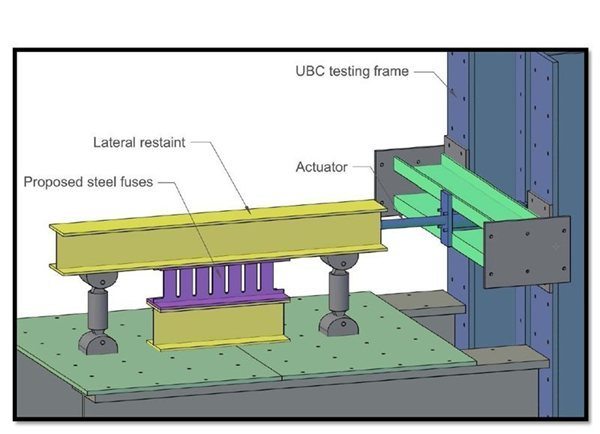2013
Dr. Tony Yang
Department of Civil Engineering, University of British Columbia
Development of Innovative and Cost-Effective Seismic Fuses using Wide Flange Steel Sections
The goal of this research is to develop robust and cost-effective steel structural fuses to provide the steel industry a leap advantage in the construction market in Western Canada and other areas of high seismic activity. This will be accomplished by developing innovative cut out schemes using commonly available conventional steel wide flange shapes. Using commonly available conventional steel wide flange shapes with innovative cut outs will provide two fold advantages: 1) the commonly available steel wide flange shape has excellent structural geometry, where the web with the innovative cut out will be a natural and excellent structural fuse, while the flanges can be easily bolted to the rest of the structure without specialized connection detailing, 2) the commonly available conventional steel wide flange shape will reduce material and fabrication costs, where local steel fabricators can produce these steel structural fuses efficiently based on the cut out specified by the engineers. This will reduce the fabrication time and the total cost for the construction, which will create a significant advantage for the steel construction industry and allow high volume steel construction projects to be developed in Canada and worldwide.
This research will involve an extensive literature review, parametric studies using finite element software to investigate various wide flange sections and cut-out shapes to identify optimal systems and experimental studies to validate the numerical analysis. Furthermore, lifetime maintenance analysis will be conducted and using performance-based evaluation procedures.
Ultimately, this research will provide the detailed design equations to guide engineers to develop structural fuses, which utilize the wide flange section with innovative cut outs as the potential steel structural fuse. This will allow engineers to use these steel structural fuses to design the structure without the need to rely on the proprietary information provided by the individual vender. This will in return reduce the construction cost and create significant marketing advantages for the steel industry.
BIOGRAPHY
Dr. Tony Yang received his B.Sc. (2001) and M.Sc. (2002) from the University at Buffalo, New York, and his Ph.D. from the University of California, Berkeley in 2006. His research focus on improving the structural performance through advanced analytical simulation and experimental testing. He has developed the next-generation performance-based design guidelines (adopted by the Applied Technology Council, the ATC-58 research team) in the United States; developed advanced experimental testing technologies, such as hybrid simulation and nonlinear control of shake table, to evaluate structural response under extreme loading conditions; developed risk-based simulation models for countries in the North and South America and the Global Earthquake Model (GEM) for the counties in the South East Asia. Dr. Yang has been actively involved in using novel technologies, such as base isolation systems and dampers, to improve structural performance. He has working with leading structural engineering firms to peer-reviewed landmark buildings, including the tallest steel plate shear wall structure in the world. Dr. Yang is an active member of the Tall Buildings Initiative Project, funded by the Pacific Earthquake Engineering Research Center, to develop seismic design guidelines for tall buildings. Dr. Yang co-developed ‘OpenSees Navigator’, a software program widely used by design engineers and researchers to design and analyze complex structural systems. He has also developed ‘PBEE’, a software program to quantify facility loss under extreme events.


